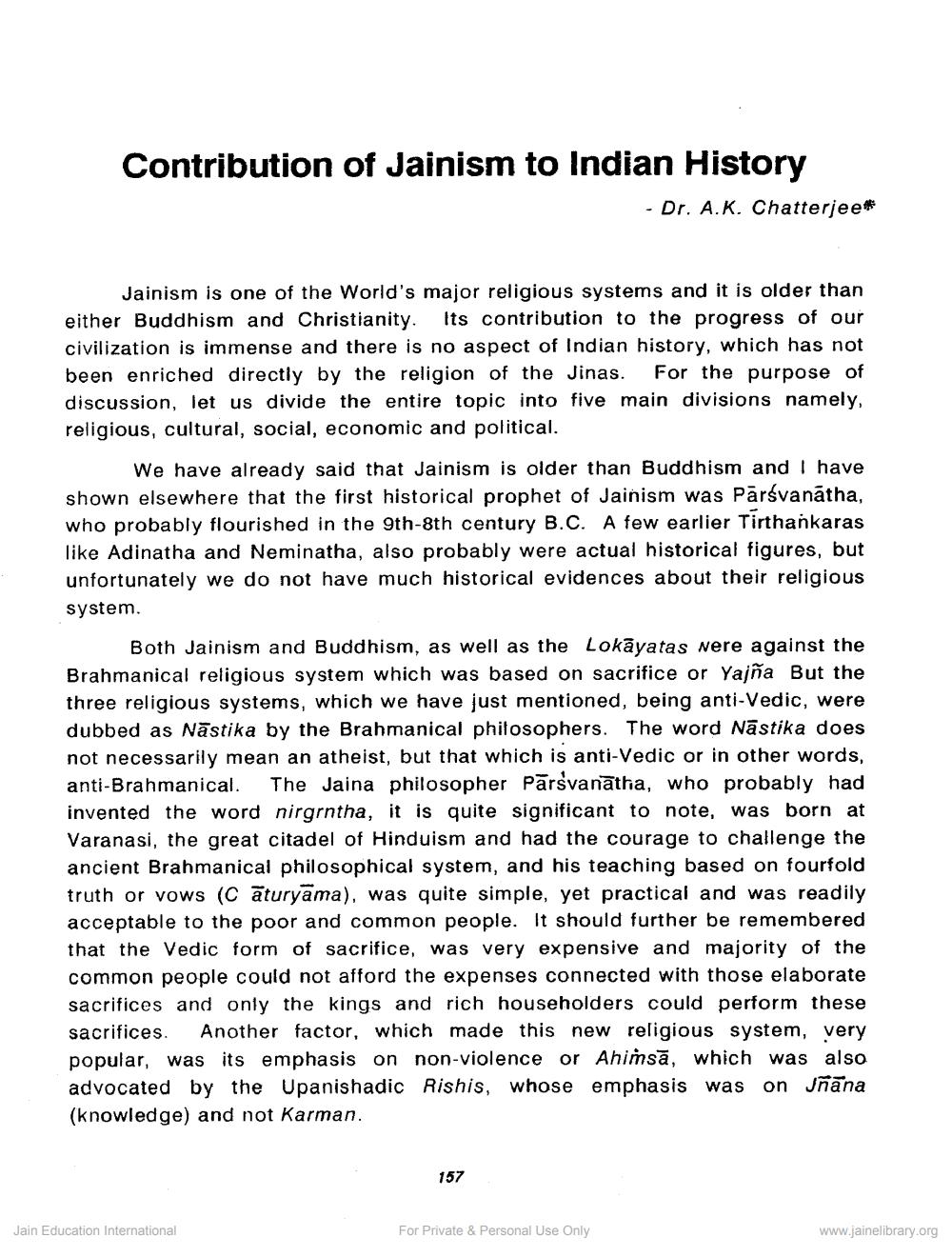Book Title: Contribution of Jainism to Indian History Author(s): A K Chateerjee Publisher: Z_Shwetambar_Sthanakvasi_Jain_Sabha_Hirak_Jayanti_Granth_012052.pdf View full book textPage 1
________________ Contribution of Jainism to Indian History - Dr. A.K. Chatterjee Jainism is one of the World's major religious systems and it is older than either Buddhism and Christianity. Its contribution to the progress of our civilization is immense and there is no aspect of Indian history, which has not been enriched directly by the religion of the Jinas. For the purpose of discussion, let us divide the entire topic into five main divisions namely, religious, cultural, social, economic and political. We have already said that Jainism is older than Buddhism and I have shown elsewhere that the first historical prophet of Jainism was Pārsvanatha, who probably flourished in the 9th-8th century B.C. A few earlier Tirthankaras like Adinatha and Neminatha, also probably were actual historical figures, but unfortunately we do not have much historical evidences about their religious. system. Both Jainism and Buddhism, as well as the Lokayatas were against the Brahmanical religious system which was based on sacrifice or Yajña But the three religious systems, which we have just mentioned, being anti-Vedic, were dubbed as Nästika by the Brahmanical philosophers. The word Nästika does not necessarily mean an atheist, but that which is anti-Vedic or in other words, anti-Brahmanical. The Jaina philosopher Pārsvanatha, who probably had invented the word nirgrntha, it is quite significant to note, was born at Varanasi, the great citadel of Hinduism and had the courage to challenge the ancient Brahmanical philosophical system, and his teaching based on fourfold. truth or vows (C aturyama), was quite simple, yet practical and was readily acceptable to the poor and common people. It should further be remembered that the Vedic form of sacrifice, was very expensive and majority of the common people could not afford the expenses connected with those elaborate sacrifices and only the kings and rich householders could perform these sacrifices. Another factor, which made this new religious system, very popular, was its emphasis on non-violence or Ahimsa, which was also. advocated by the Upanishadic Rishis, whose emphasis was on Jñana (knowledge) and not Karman. Jain Education International 157 For Private & Personal Use Only www.jainelibrary.orgPage Navigation
1 2 3 4 5 6 7
